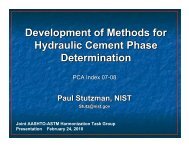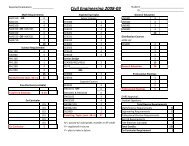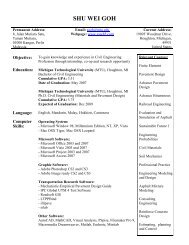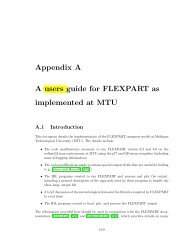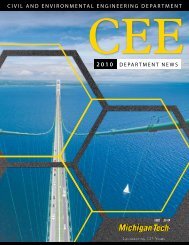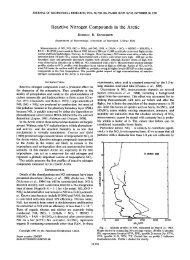Evaluation of Septic Tank and Subsurface Wetland for
Evaluation of Septic Tank and Subsurface Wetland for
Evaluation of Septic Tank and Subsurface Wetland for
You also want an ePaper? Increase the reach of your titles
YUMPU automatically turns print PDFs into web optimized ePapers that Google loves.
out (see Figure 4-2). Locating the hole at the bottom <strong>of</strong> the pipe may have resulted in a<br />
higher concentration <strong>of</strong> solids in the sample bottle that what exited the wetl<strong>and</strong>. On<br />
October 5 the two-liter bottle was not sufficient to fill all the jars <strong>for</strong> the NWC laboratory<br />
<strong>and</strong> <strong>for</strong> inter-laboratory comparison. In this instance, water was added from the mid-<br />
wetl<strong>and</strong> sample point to make one homogenous sample <strong>of</strong> sufficient volume.<br />
Figure 4-2 Retrieve effluent collection apparatus showing pipe tap <strong>and</strong> collection<br />
bottle under a steel grill. (Photograph by author.)<br />
One duplicate sample was collected <strong>for</strong> each round, making a total <strong>of</strong> seven samples <strong>for</strong><br />
each sample set taken to the NWC laboratory in Bogue, St. James (Montego Bay<br />
metropolitan area). Each BOD, TSS, nutrient <strong>and</strong> pH sample was stored in an acid<br />
washed one half gallon HDPE jug. Each coli<strong>for</strong>m sample was stored in a sterilized 250ml<br />
glass bottle. All samples were transported at ambient temperature as is customary <strong>for</strong><br />
samples delivered to the NWC laboratory within three hours <strong>of</strong> collection.<br />
26



